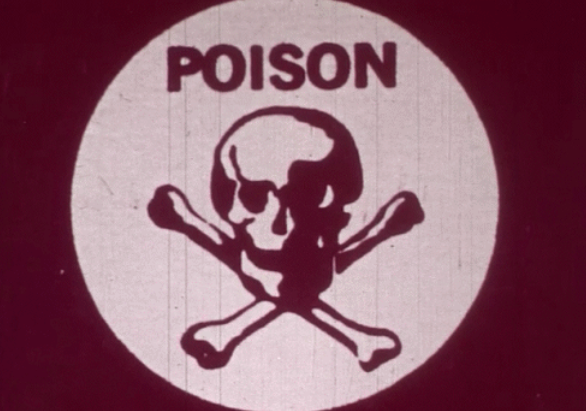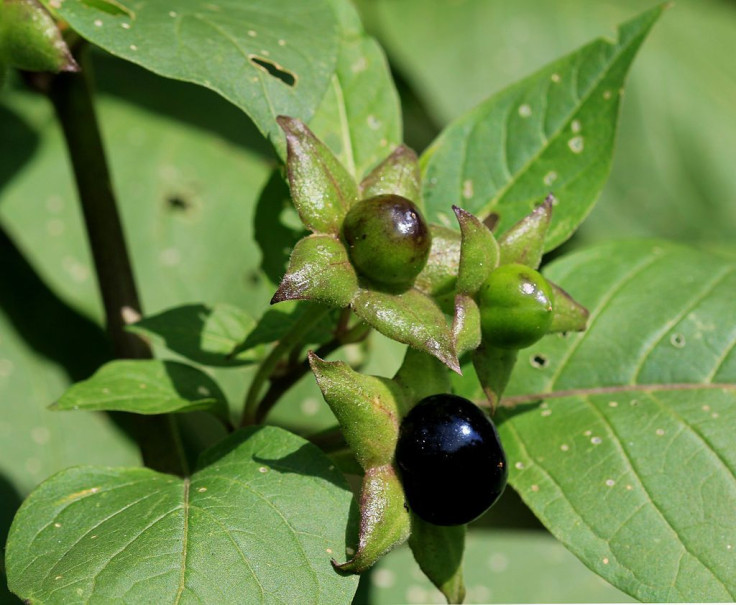Pick Your Poison: How 4 Of The Most Lethal Substances Kill You

It’s said to be a woman’s weapon, the sneakiest way to murder, and one of the worst ways to die. Poison has been used for centuries by politicians at odds, wives who would become black widows, and those hoping to take their own lives, among others. Death by poison can be gruesome for onlookers, especially when they know what’s happening inside the victim’s body. Here’s how four famous toxins work their black magic.
Cyanide
Perhaps the most popular of all poisons in murder mysteries and history alike, cyanide can be deadly to humans in doses as minute as 1.5 milligrams per kilogram of body weight. Cyanide actually refers to any chemical substance that contains a carbon-nitrogen bond. Not all of these are deadly, but sodium cyanide, potassium cyanide, and hydrogen cyanide are. Hydrogen cyanide is the most common — and most lethal — variety. It’s what the Nazis used in their death camp gas chambers. Ingested cyanide is usually one of the salt forms: potassium cyanide or sodium cyanide.
The poison does its work in the bloodstream. Cyanide is an enzyme inhibitor, attaching to the iron within the red blood cells responsible for oxygen transport. It essentially suffocates blood cells — inhibiting hemoglobin from binding with oxygen. This tears into the body’s aerobic respiration process, starving the body of oxygen. Important organs including the brain and heart are doomed within moments. A victim poisoned will slip into a deep coma, followed by cardiac arrest.
Arsenic
Arsenic rivals cyanide in both lethality and infamy, rearing its head in Victorian plays and high-profile murders. The compound can be ingested accidentally through things like occupational exposure, groundwater, or even rice. A small dose of the poison can cause headaches, drowsiness, diarrhea, and confusion, but a larger, intentional dose will wreak much more havoc.
Like cyanide, arsenic disrupts cells at a molecular level. However, it doesn’t bother oxygen. Instead, it mimics phosphate, targeting the reaction that allows cells to store energy. By displacing this necessary chemical, arsenic can block energy production and cell signaling, making it impossible for cells to keep up the basic processes that keep us alive.
Death by arsenic is especially horrific because the poison damages several body functions simultaneously. It can also combine with sulfur groups on proteins, which are usually in charge of holding important amino acids in a specific formation. Messing with these basic formations can cause a wide variety of problems within the cell, which ripple out and manifest as different symptoms such as bloody vomit, convulsions, stomach pain, and cramps.
Belladonna
Deadly nightshade, death cherries, the devil’s berries. Atropa belladonna earns all of its ominous nicknames with its toxicity — just a few berries can kill an adult. Ancient Romans favored it for making poison-tipped arrows, and women (quite misguidedly) used the juice to enlarge their pupils and give them a supposedly more desirable appearance. This practice lead to the plant’s name, which translates to “beautiful lady.”
Belladonna contains several tropane alkaloids, some of which are capable of blocking neurotransmitters in the central and peripheral nervous system. In this way it disrupts heart rate, breathing, sweating, and the involuntary movement of smooth muscles in the gastrointestinal tract. Someone suffering from belladonna poisoning can exhibit a loss of balance, sensitivity to light, slurred speech, hallucinations, and confusion. Due to the psychological effects, belladonna and related plants have been used as recreational drugs — a highly dangerous choice due to the exceptional risk of overdose and death.

Strychnine
A common pesticide and rat poison, strychnine has been targeted by animal rights groups like PETA, who say the poison can cause violent, inhumane death. Very few would disagree with their assessment. Strychnine kills by blocking the function of an inhibitory neurotransmitter present in the spinal cord and brain that is usually responsible for quelling motor nerves. Without this off switch, motor neurons run out of control and the victim suffers spastic, painful muscle contractions. These convulsions can lead to hyperthermia, exhaustion, and oxygen depletion that eventually leads to asphyxiation.
Rats aren’t the only ones at risk for strychnine poisoning, which can occur after ingesting or inhaling the white, odorless powder. Several murders throughout history have been attributed to the unsubtle poison, which has also snuck its way into some street drugs.



























